Weekly Tech Recap - № 131 - Tesla hell, RED’s Hydrogen One, Windows 10 more accessible, etc.
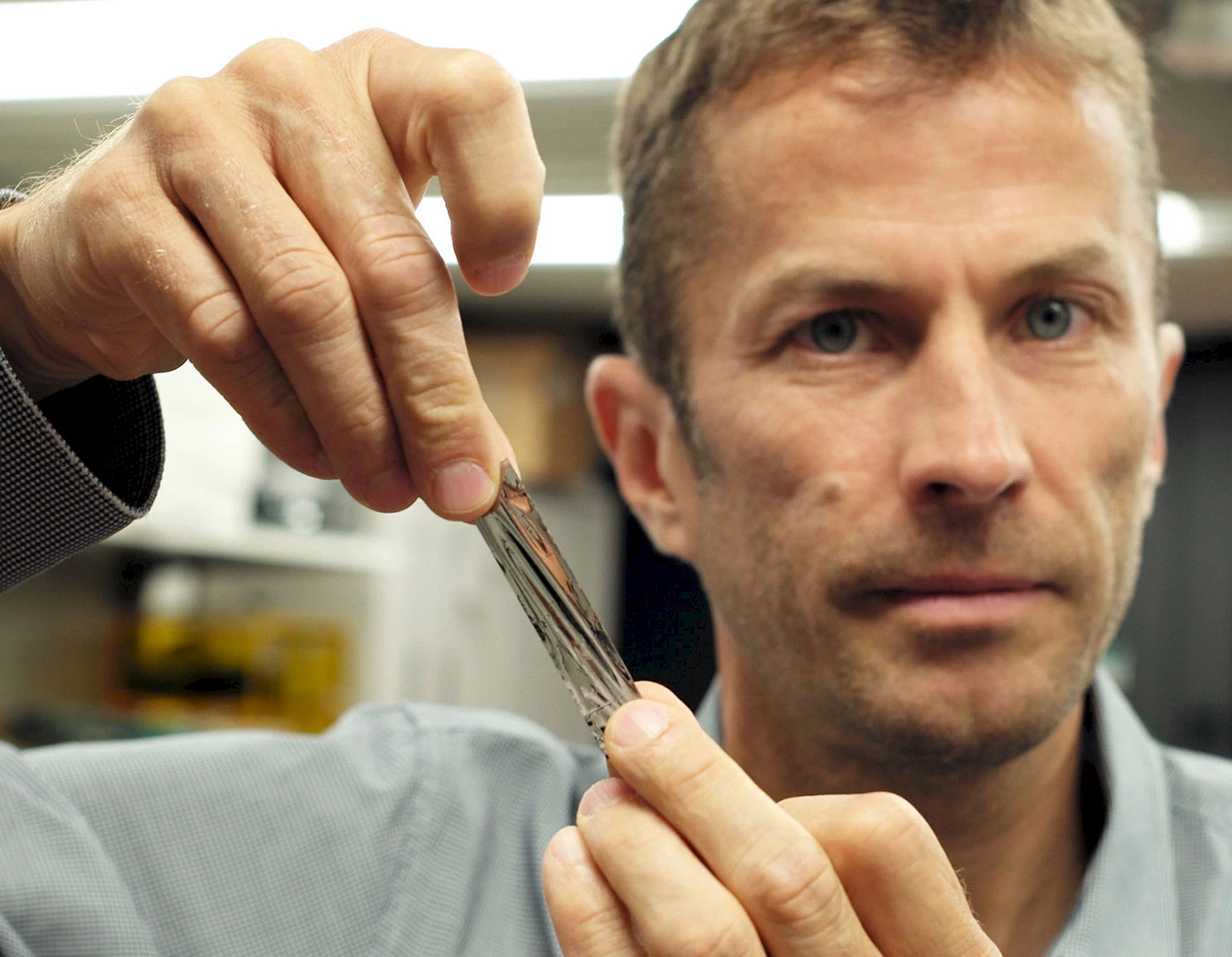
Tesla Hell
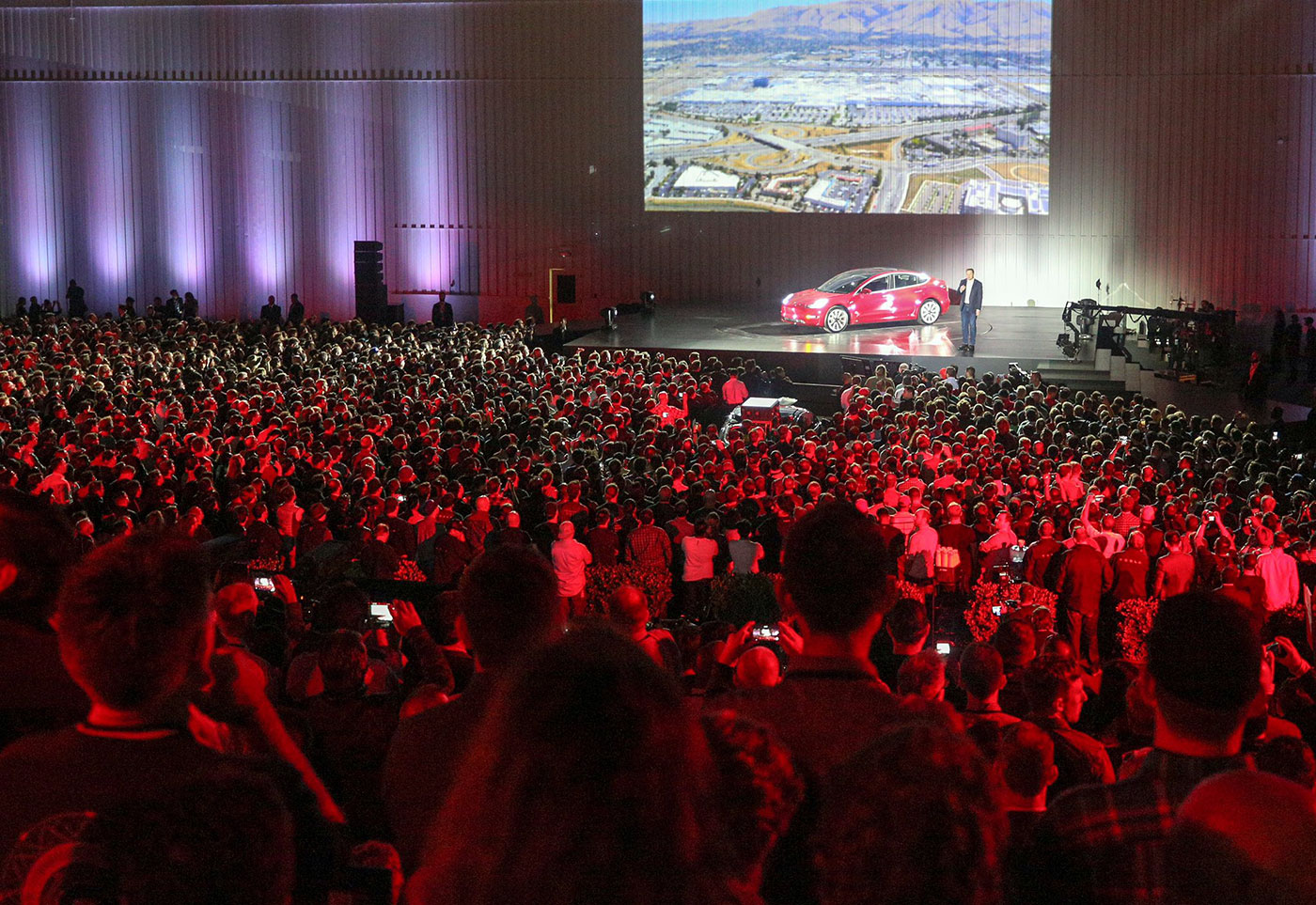
Elon Musk on stage, Freemont, California. © Tesla.
On Friday, at a ceremony at Tesla’s Freemont, California factory, Elon Musk handed the keys to the lucky owners of the first thirty Model 3s to roll off Tesla’s production line. “Frankly, we’re going to be in production hell,” he told a crowd of Tesla employees in a speech. “For at least six months, maybe longer.” The challenge is huge: so far, just 50 sedans have been built, 20 of which are being held back for testing and validation, while the company aims to ramp up production from 100 cars in August to a whopping 20,000 per month by December. Even so, people who are ordering their Model 3 now will have to wait until the end of 2018 to get it. The pressure to speed up production is raising concerns among factory workers over safety and the increased risk of accidents. A factory worker organization called “A Fair Future at Tesla” sent an open letter to the company’s board of directors complaining of the lack of transparency over the safety risks of the job. 2015 data from the Bureau of Labor Statistics show Tesla’s injury rate in 2015 was higher than that of sawmills and slaughter houses.
⇨ Recode, “Elon Musk is preparing to go through ‘production hell’ to deliver Tesla’s Model 3 on time.”
⇨ Recode, “Tesla posted a record quarterly loss as it ramps up production for its first mass market vehicle.”
RED’s Hydrogen One
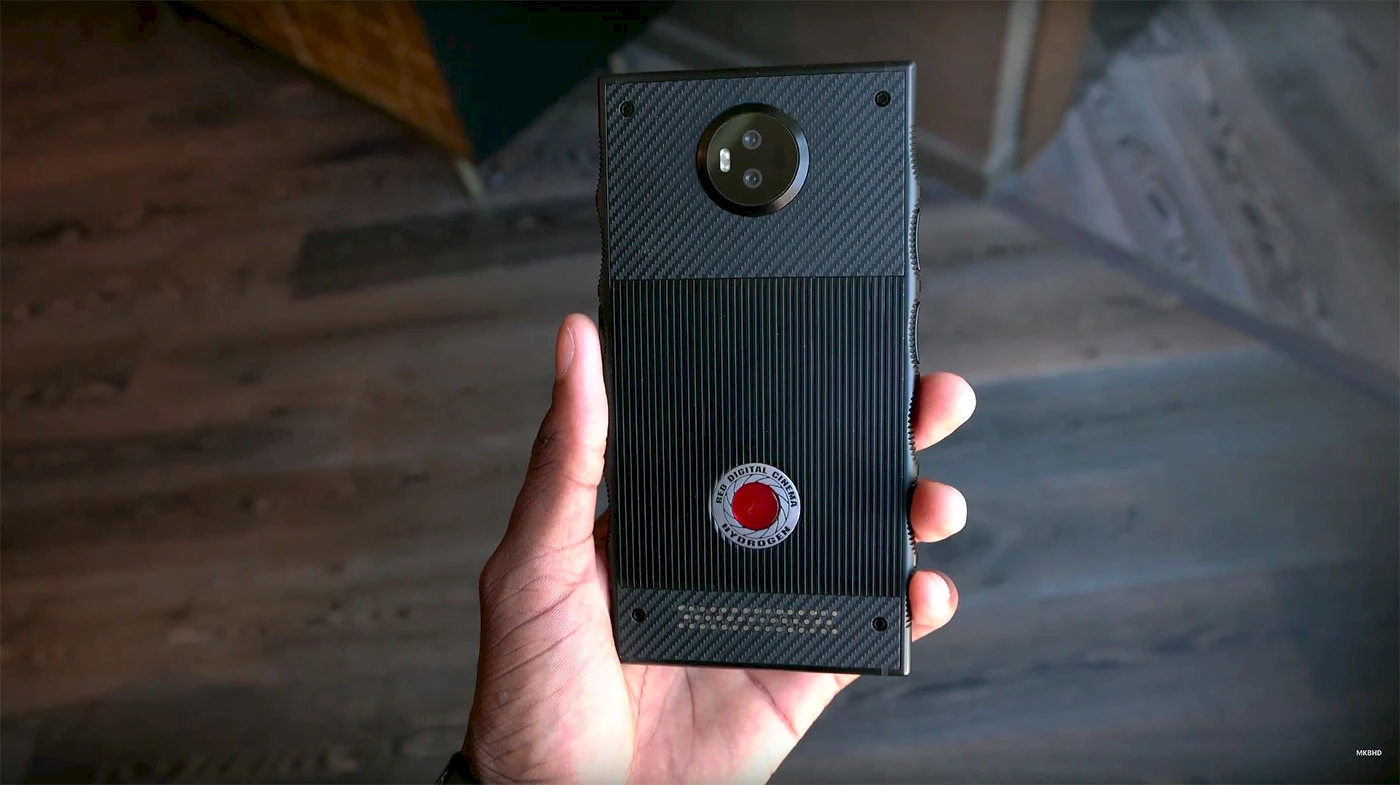
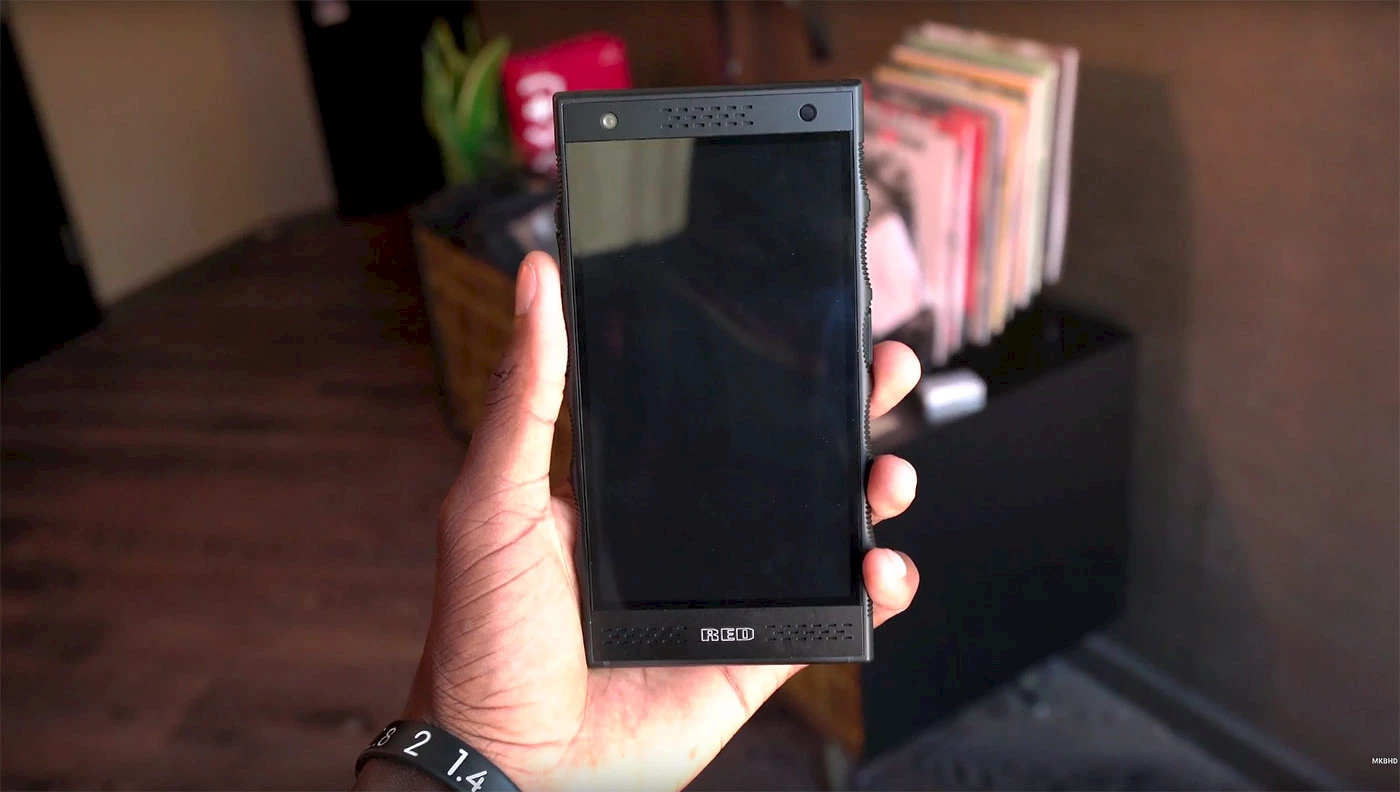
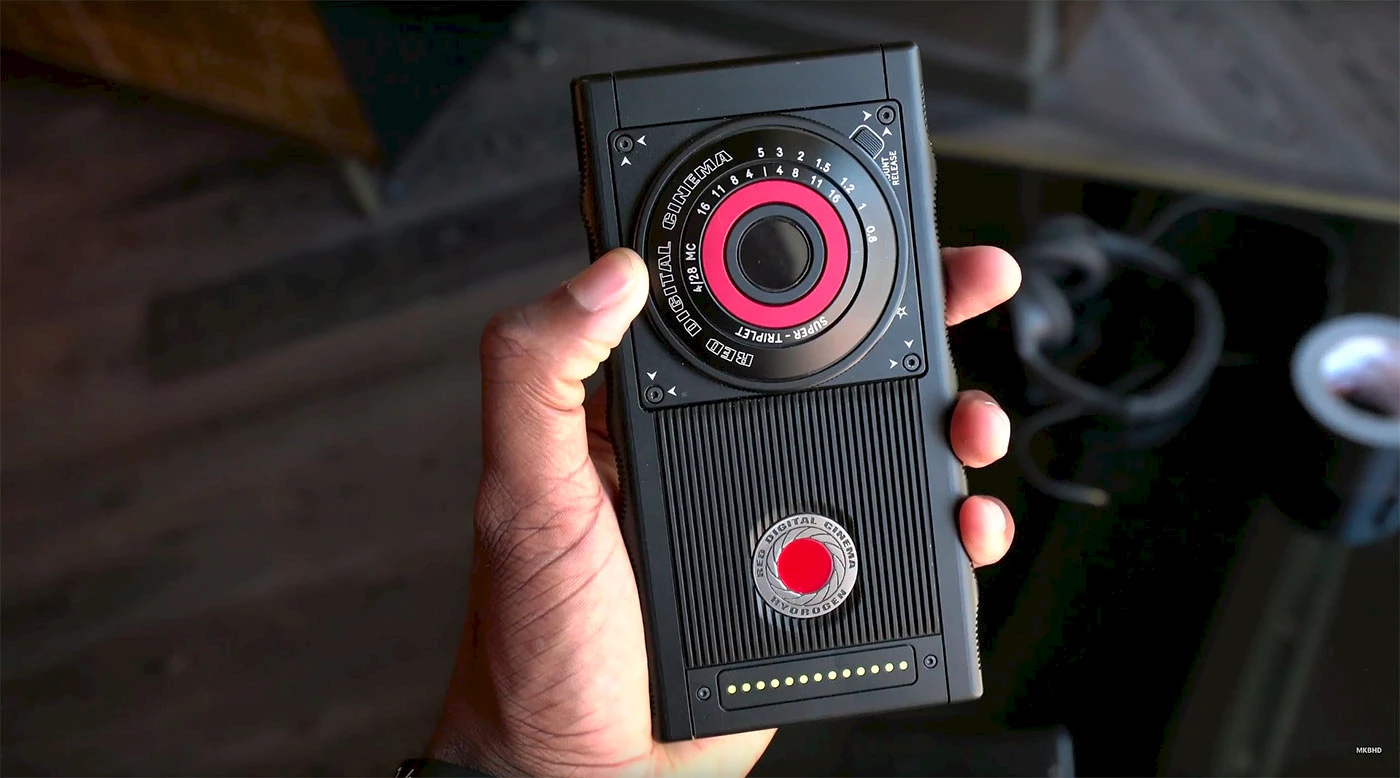
Hydrogen One Prototype. © Marques Brownlee.
RED, the high-end 4k and 8k camera manufacturer, caused a stir when it announced that it would produce a “holographic” Android phone, called Hydrogen One. Skimpy on details, the company promised a 5.7-inch screen able to convert from 2D to 3D, support for additional modules, a price tag of $1,195 for the basic model and a delivery date in early 2018. We now know a bit more about the phone thanks to Youtuber Marques Brownlee, who was given the opportunity to handle a couple of prototypes. First, it’s huge, even larger than the iPhone 7 Plus. Second, optional modules attach to the back of the device with magnets, much like Lenovo’s Moto Mods. Marques saw the “holographic” screen in action, but was not allowed to film it. One can only guess that the first module will be a ground-breaking video camera for cell phones.
⇨ Circuit Breaker, “RED’s upcoming $1,200 smartphone is enormous.”
Magnetic stripes power on
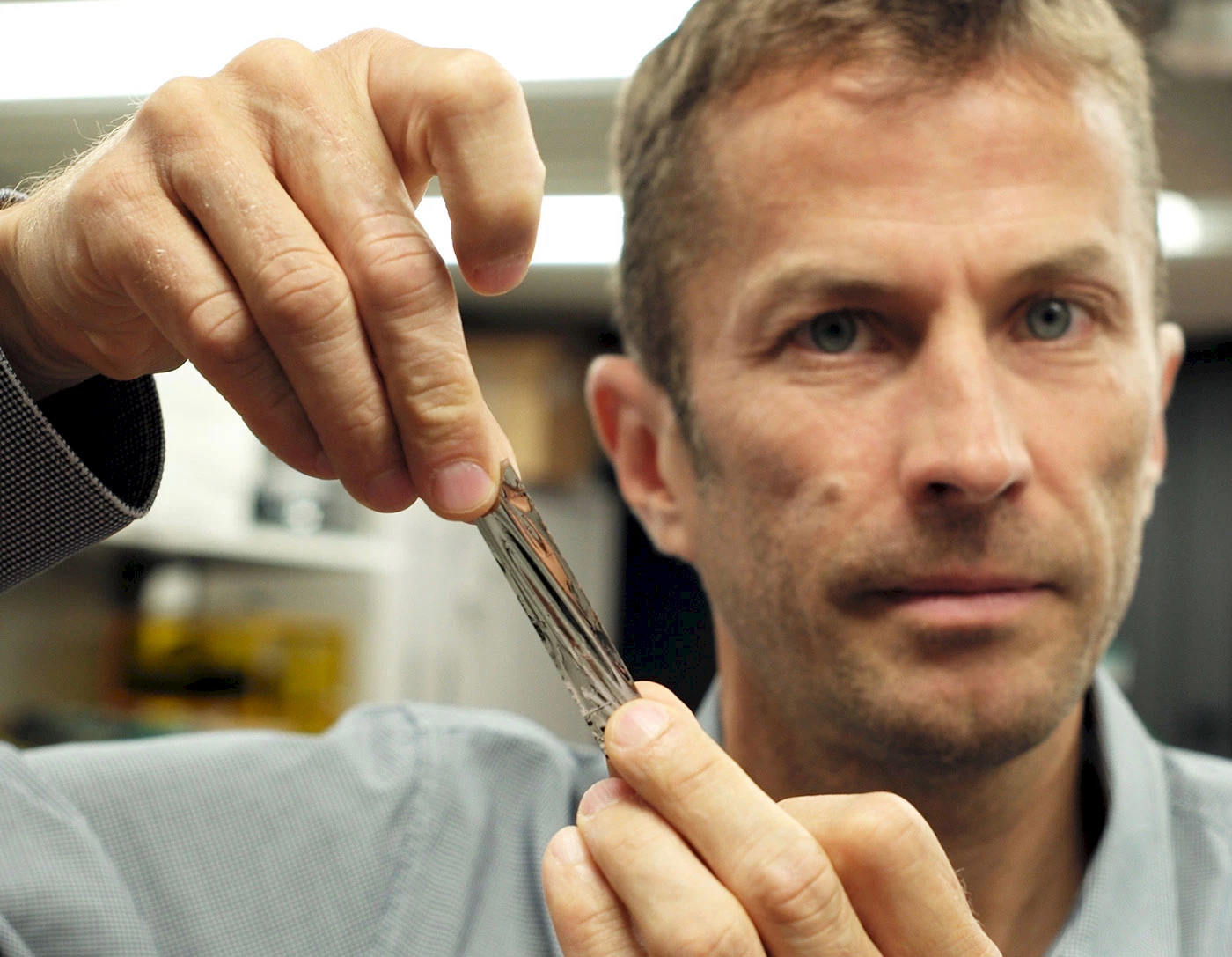
IBM’s Mark Lantz holding one square inch of the new super-dense magnetic tape. © IBM.
For data storage purposes, at any rate… IBM and Sony have teamed up to develop a new magnetic stripe able to hold 201 gigabits of data per square inch (6.45cm2), for a theoretical capacity of 330 terabytes in a palm-sized cartridge. The largest tapes currently available only store 15TB. To achieve this impressive result, Sony developed a new, super-high-density magnetic stripe, while IBM worked on a new nonometric recording/reading head and signal processing algorithms.
⇨ Ars Technica, “IBM and Sony cram up to 330 terabytes into tiny tape cartridge.”
3D-printed bridges
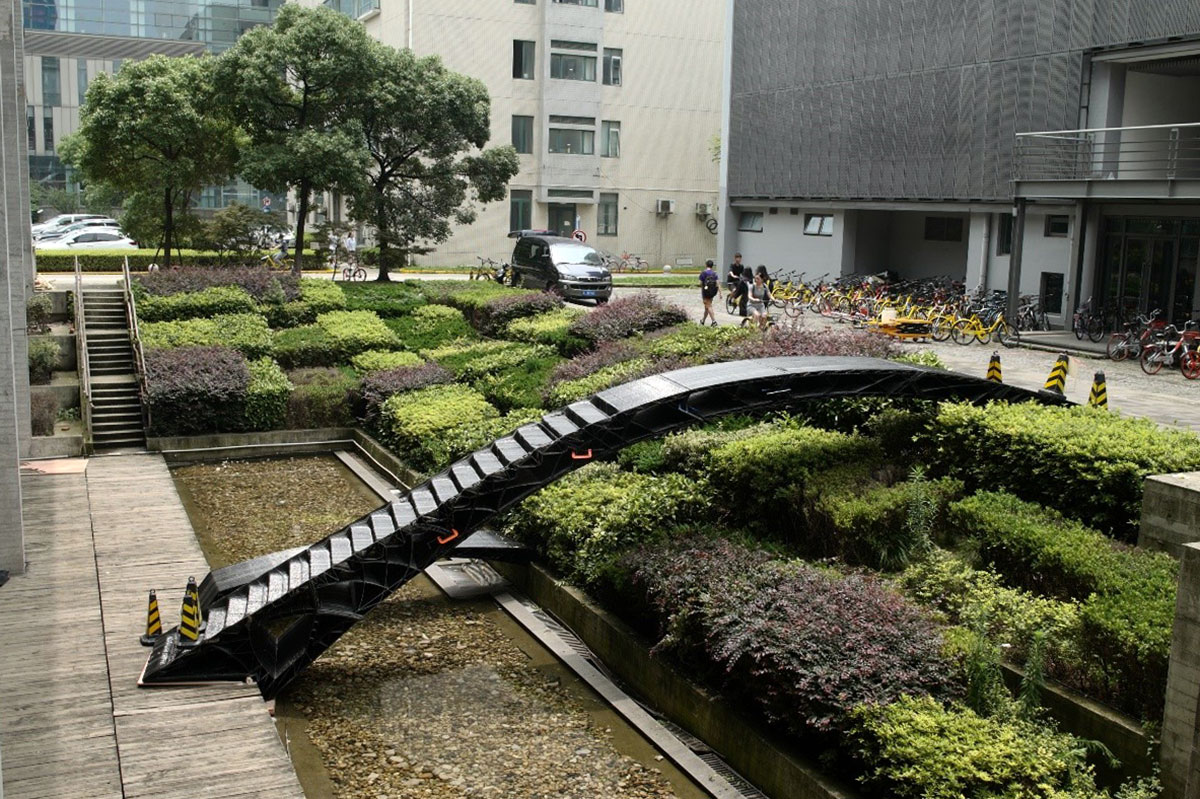
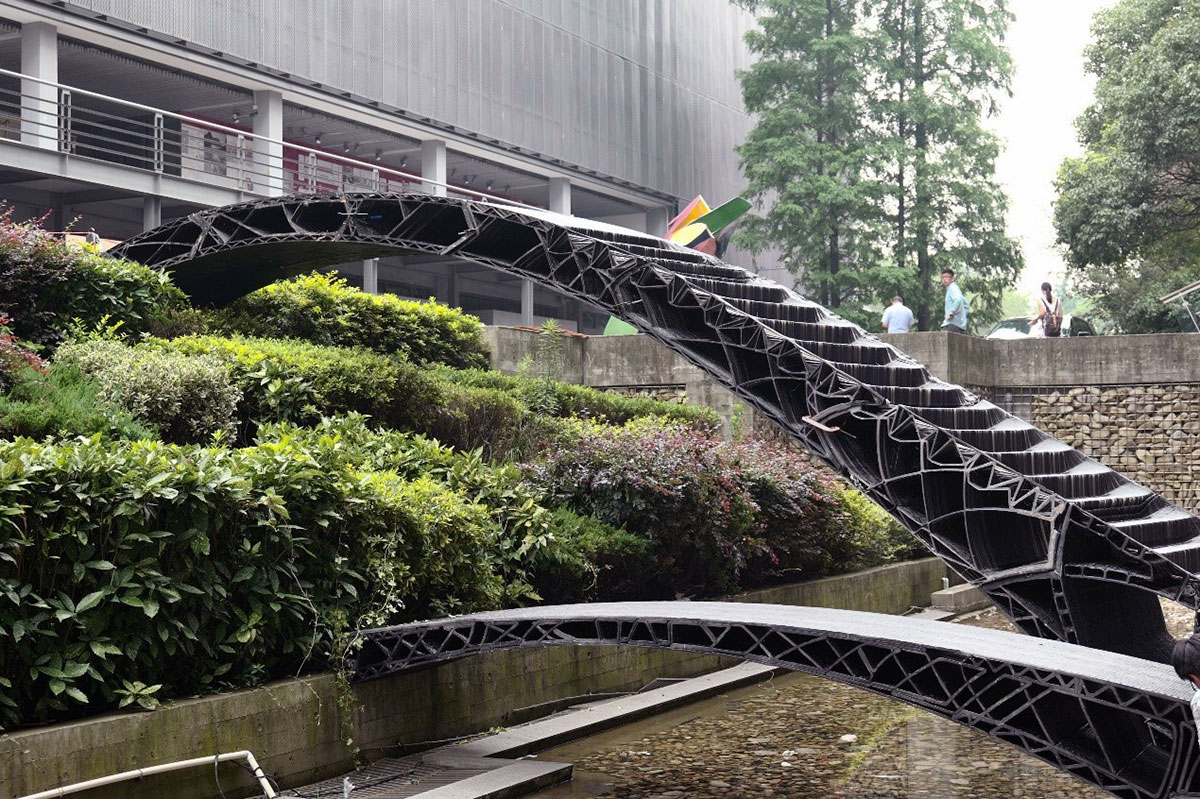
3D-printed bridges. © Tongji University.
The School of Architecture and Urban Planning at Shanghai’s Tongji University has unveiled China's first 3D-printed pedestrian bridges. The two bridges are made of plastic, and measure four meters and eleven meters, respectively. The decorative bridges were erected over a garden near the school’s main entrance. The larger bridge has steps, while the smaller one is flat. Actual printing took 360 hours, while assembly and installation took just one day.
⇨ 3ders.org, “Bridge over river Shanghai: Tongji University unveils China’s 1st 3D printed pedestrian bridges.”
⇨ 同济大学建筑与城市规划学院新闻中心, “The first robotic printed bridge in the world by Tongji University.”
Microsoft makes Windows 10 more accessible
People with amyotrophic lateral sclerosis, or ALS, progressively lose motor function, with eyes being the last remaining muscle that can move. Microsoft, in conjunction with Tobii, is making Windows 10 more accessible for everyone by adding a built-in eye tracking function to the OS. Dubbed Eye Control, the native eye tracking support will allow users to launch programs, type, scroll through documents and communicate with those around them with text to speech programs, just by looking at the screen. The program is currently being tested in beta form.
⇨ Mashable, “Microsoft adds built-in eye tracking function to Windows 10 to make it more accessibles.”
